|
GLOBE
Assessment
Grade K-2
Atmosphere
Investigation Tests
This assessment
activity is intended for students in the early primary grades
(2 and 3).
Teacher instructions:
Copy these pictures for the students to use. Make enough copies
so that each student group has a set. Each student group will
need: marking pen; poster board OR butcher paper OR 3 sheets
8x11 paper taped together; lined paper for their story.
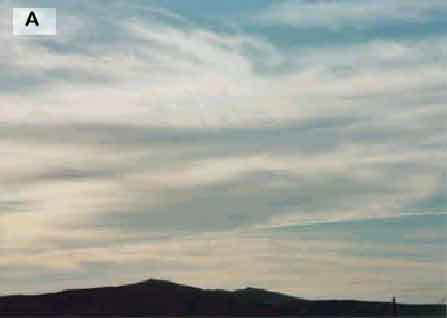
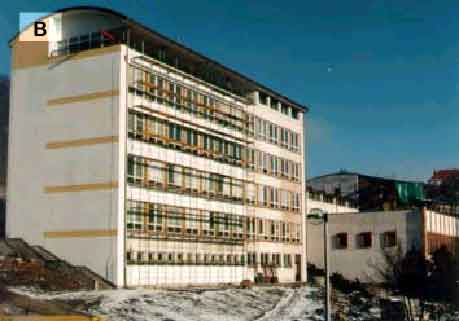
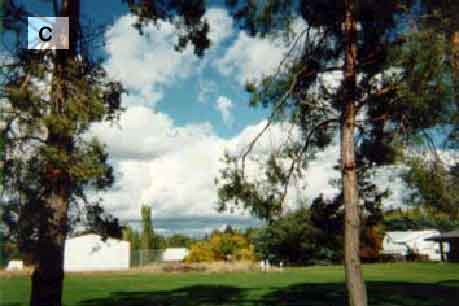
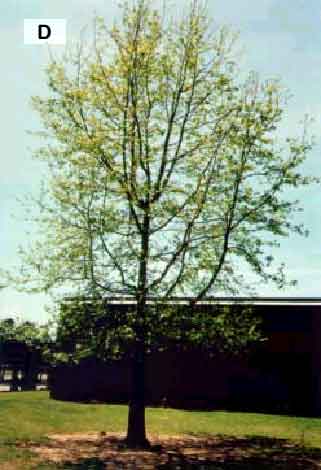
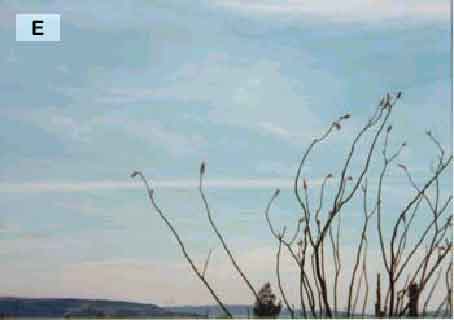

1) (Take GLOBE
Measurements: Make cloud observations that are accurate and
appropriate) Divide the pictures into groups by looking
at the shape of the cloud. Name the type of cloud that you
find in each picture.
2) (Summarize
and Communicate: Ask students to create a presentation that
summarizes their knowledge about clouds and cloud types)
Use the pictures to make a poster that tells about clouds.
Put the picture of the cloud type that is closest to the earth
is at the bottom of the poster. Put the picture of the cloud
type that is highest in the atmosphere at the top of your
poster.
3) (Interpret
GLOBE data: Explain the relationship between cloud type and
atmospheric location of each cloud type) Write the name
of each cloud next to it. Write the altitude where this type
of cloud forms in the atmosphere.
4) (Take measurements:
Make accurate and appropriate measurements) Decide how
much of the sky is covered with clouds in each of the pictures.
Write the amount of cloud cover next to the name of the cloud
and its altitude.
5) (Interpret
GLOBE data: Infer patterns & trends in the pictures and explain
the relationship between cloud type and precipitation)
Will it rain or snow later in the day from any of these clouds?
How can you tell?
Table 1 shows the
early morning temperature at each of the school sites from
the pictures on your poster.
Table
1: Early morning temperature at Schools
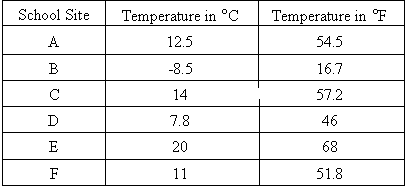
6) (Analyze
and Compare GLOBE data: Identify similarities and differences)
Which of these schools has weather MOST like the weather at
your school today? Tell why this school site is MOST like
your school.
7) (Analyze
and Compare GLOBE data: Identify similarities and differences)
Which of these schools has weather LEAST like the weather
at your school today? Tell why this school site is LEAST like
your school.
Imagine that you
are a grown up who lives in a town that has one school. You
have a morning radio show. Every morning on your way to work
you drive past the school. On your radio show you tell the
listeners what the weather is like at the school. You tell
the children how to dress for school. Is it important to wear
a raincoat? Should they bring an umbrella? etc.
8) Communicate:
(Ask students to compose informal discourse that informs,
explains, and persuades) Choose one of the school sites
shown in pictures A - F that you would like to write about.
Use the information in the picture and the temperature information
in Table 1 to write the radio report that you will give about
the school.
|

